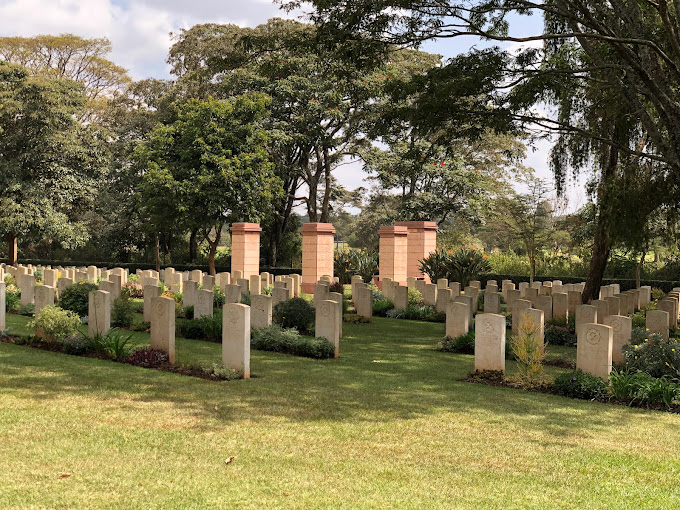Nairobi War Cemetery
The Nairobi War Cemetery, managed by the Commonwealth War Graves Commission, serves as a burial ground for the Second World War casualties. Located on the south-western outskirts of Nairobi, Kenya, it is approximately 10 kilometers west of the city center on Ngong Road, adjacent to the Nairobi race course within the Ngong Forest Reserve. The cemetery is accessible via a long driveway off Ngong Road, marked by a CWGC direction sign.
Visiting Information
Parking: The cemetery offers a car park with space for up to eight vehicles, featuring a firm and level surface.
Access Layout and Main Entrance: The main entrance to the cemetery includes stone steps leading to a firm, level path, accessible through metal gates with a clear opening of approximately 1500 mm per section. The internal paths within the cemetery are firm and grassy, with several level stone pathways. The cemetery houses a Cross of Sacrifice, a Stone of Remembrance, and two memorials: the East African and Nairobi Memorial. A shelter building at the main entrance includes visitor benches and a Register Box. The Stone of Remembrance is situated on a raised platform accessible by stone steps from all four sides. Stone and wooden benches are scattered around the cemetery for visitor seating.
Alternative Access: An alternative access point is available to the left of the main entrance, marked with a signpost. This provides step-free access onto a firm, level threshold leading into the cemetery.
Additional Information:
- The Nairobi War Cemetery is open daily from 06:00 to 18:00.
- Visitors are strongly advised to be cautious due to reported attacks in the vicinity. It is recommended not to carry valuables and to travel to the cemetery entrance by vehicle rather than walking the one-kilometer track from the main road.
- Wild monkeys inhabit the area; visitors are advised not to approach or feed them.
History Information
During the Second World War, Nairobi was the headquarters of the East African Force and a key base for military operations in Jubaland, Italian Somaliland, British Somaliland, and Ethiopia. It also served as a hospital center, with No.87 British General Hospital present from June 1943 to December 1945, and No.150 British General Hospital operating for part of 1943.
Opened in 1941 by the military authorities, the Nairobi War Cemetery now contains 1,952 Commonwealth burials from the Second World War, including 11 unidentified graves. Additionally, there are 76 non-war burials and one French grave. The cemetery was designed by G. Vey.
East Africa Memorial: Within the cemetery is the East Africa Memorial, which honors those who died in the advance into Italian Somaliland and Ethiopia, as well as during the Madagascar operations in 1942, who have no known grave. It also commemorates many men lost in the sinking of the troopship 'Khedive Ismail' on 12 February 1944, including a large part of the 301st Field Regiment, East African Artillery.
Nairobi Memorial: The Nairobi Memorial commemorates 477 men from the United Kingdom, South African, and East African Forces who died in non-operational zones of Kenya while in training, or on lines of communication or garrison duty, and whose graves could not be located or maintained.
The Nairobi War Cemetery stands as a significant historical site, honoring the sacrifices of those who served and ensuring their memories are preserved.



